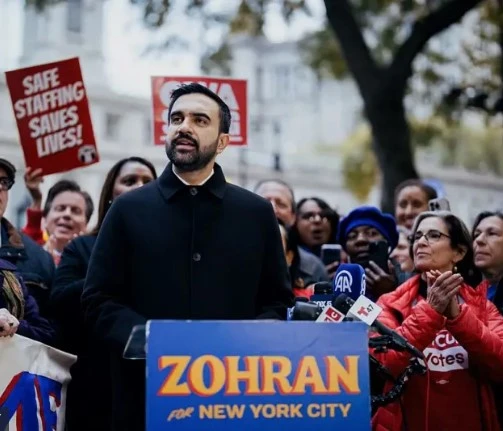Xiang Qing and Lam Chi Leung
One of the major features of the world economic crisis that began in 2008 is that it not only combines a profound political and social crisis, but also combines an unprecedented natural environmental crisis and a major crisis raging by the new crown pneumonia epidemic. So far, not only the global economic recession has not ended, but also large-scale mass anti-government actions, even revolutionary actions, are spreading among many countries, and there is also a phenomenon of the rise of extreme right populists. The consciousness of the masses is increasingly alienated from all traditional parties and political thoughts. For the propaganda and agitation work of the socialist revolution, this is a new situation that is obviously beneficial and challenging.
The current crisis has more vividly shown the oldness and obsolescence of the overall capitalist system than ever before. Although the current production technology is advancing by leaps and bounds, surpassing any era in the past, the huge astonishing wealth and all kinds of wonderful convenience equipment that are quickly produced are mainly enjoyed by less than 1% of the people, and they have not really benefited the people in general. Improve the quality of life of most people. Soon after the end of the Second World War, the advanced capitalist countries in the West experienced a period of economic prosperity that lasted more than two decades (later called the golden age). At that time, the working class fought for significant improvements, and generally received benefits such as increasing real wages, shortening standard working hours, improving the working environment, enjoying statutory holidays and various social security. However, by the end of the 1960s, the West had already formed a huge accumulation of capital and overcapacity, and began to enter a period of economic stagnation, recession or only slow growth. The working class was fiercely attacked by the capitalists and their governments, the achievements of the past reforms were reduced step by step, and the power of the trade unions was greatly reduced. Since then, regardless of economic recession or prosperity, ordinary workers have worked harder and harder, their positions have become more and more unstable, and the proportion of total wage income in national income has become smaller and smaller. As the government tried its best to adopt various policies (such as vigorously promoting credit consumption, strengthening arms production and certain service industries, globalization, developing virtual economy, etc.) to prevent or save the economic downturn (much smarter than in the 1930s), plus the Soviet Union, The Communist governments of Eastern Europe and China voluntarily surrendered to capitalism in the 1980s and expanded the world market for the bourgeoisie. Therefore, a global economic crisis comparable to 1929 was delayed until 2008 when it finally broke out. The economy of East Asia, which is known as a miracle, has not been able to escape the major impact of this crisis, let alone point out the way out for this crisis. This is because the economy of this region has not embarked on any new development path, but has been included in the international production chain controlled by the existing multinational capital, especially undertaking more lower-level production tasks. Under the premise of preserving the capitalist system, any way to save the economic crisis must be to strengthen the squeeze of workers. The more production tasks are moved from advanced Western countries to East Asia under the arrangement of transnational capital, the result is that the total wages of global workers will be less, and the lives of workers will be more painful. Although this situation helps to increase the average profit rate of capital, which is also helpful to the recovery of the current crisis, but in turn, it must also allow a new and ultimately more serious crisis of excessive capital accumulation to appear earlier. It can be seen from this that whether the capitalist system conforms to human nature, or that its historical progressive function (developing social productivity while improving people’s living standards) has not yet been completed, it is fundamentally wrong. The Great Depression of the last century actually ended after the outbreak of the Second World War. The current Great Recession may not necessarily trigger a world war, but it will inevitably continue for a long time. Because the deep internal contradiction of capitalism as its source is no less minor than the Great Depression of the last century. If you want it to end quickly and enter a fairly stable period of prosperity, it must be possible in the near future that epoch-making innovations in production technology and provide a huge reinvestment opportunity for the transformation of global production equipment are possible. But even if this wish comes true, it does not mean that more and more terrifying economic crises will never come again. Moreover, what will the global natural environment of today be like if it suffers once again the devastation inevitably brought about by the great prosperity of capitalism? At that time, the life of human beings was probably to create a hell on earth for oneself!
Regarding the historical future of capitalism, as early as the middle of the 19th century, there was already the scientific socialism (communism) theory created by Marx and Engels, and it soon became the most important guiding ideology in the labor movement. The success of the Russian Workers’ and Peasants’ Revolution in 1917 and the establishment of the Soviet government strongly proved the correctness of Marxism. At the same time, revolutionaries from all countries saw the bright future of the Workers’ and Peasants’ revolution rapidly spreading to the world, so everyone was eager to learn from Soviet Russia. Unfortunately, subsequent revolutions in several European countries were unsuccessful because they did not have a competent party to take the lead, so the wave of revolutions temporarily fell. At the same time, in the Soviet Union (later expanded into the Soviet Union), the new bureaucrats after the revolution (with Stalin as the supreme leader) had the upper hand in both the Communist Party and the Soviets. As a result, the Communist Party of Russia and the Soviets have gradually lost the socialist characteristics that they used to integrate with the workers and peasants, and have become institutions similar to bourgeois political parties, governments, and parliaments that rule and deceive the people. The Communist International has also changed from the General Staff of the World Revolution to an instrument of Soviet bureaucratic foreign policy. This major historical turning point can be identified in 1923. After that, the Soviet bureaucracy and the Communist International used the name of the successful experience of Marxism and the Russian Revolution to mislead the workers’ and peasants’ movements in various countries, especially the revolutionary movements. The government or political parties are even more terrifying counter-revolutionary forces. At the same time, the real situation in the Soviet Union and other communist countries has become the most persuasive anti-Communist propaganda poster due to the perverse actions of the bureaucratic rulers. This counter-revolutionary force, which was originally centered on the Soviet Union and spread all over the world, plus all the successors after the disintegration of the Communist International and the Soviet Union, is collectively called Stalinism. Stalinism is not only a thought that distorts and vilifies Marxism the most terrible, but also a huge material force that has mastered more than one state power for decades. In its actions to sabotage the workers’ revolution, it has often received consciously or unconsciously support from the bourgeois government that was originally hostile to it, not to mention the cooperation of the social democratic parties of various countries, consciously or unconsciously. Therefore, it occupies a leading position in the world labor movement. For decades, it has been able to withstand the challenges of the best Marxist revolutionaries (such as Trotsky and others). Now that the huge obstacle of Stalinism has basically disappeared, it is naturally conducive to Marxism to regain its leadership role in the world revolutionary movement.
As early as when the Fourth International was founded in 1938, the “Transitional Program” adopted by it pointed out that capitalism no longer allows major reforms, and the key to the success of the new socialist revolution lies in the establishment of new and competent workers. Class revolutionary party; without a competent revolutionary party, it is impossible for the revolutionary masses to win. This historical task of building the party has not yet been successful. However, today, this task is truly urgent, and the conditions are more mature. Socialists see that on the one hand, the objective conditions of the revolution are fully mature, and on the other hand the subjective conditions of the revolution (with a real revolutionary party) are immature. The contradiction between the two has never been as prominent as it is now. Therefore, socialists should adhere to the central ideas of the “Transitional Program” and strive in accordance with the principles of propaganda, agitation, and organization that it instructs.
Although the “Transitional Program” is a document more than 80 years ago, its central idea is still completely correct today, and even more realistic than it was more than 80 years ago. Socialists should see that today more than ever before, there is a need to spread revolutionary ideas, and, in fact, there are more young people who are willing to listen to it and more willing to accept it today than in the past, not less. The “Transitional Program” certainly needs to supplement the contents of women and ecology to enrich it, but most of the specific requirements in the “Transitional Program” (naturally subject to some changes in details and expressions) are very suitable for today’s needs.
It is really not easy to judge whether it is a transitional requirement (that is, part of the transition program) by looking at individual demands alone, and the entire transition program must show the goal of establishing a working people’s government. However, when there is only one claim on the bill of lading, socialists also have ways to make it play the role of transitional requirements. That is, it is emphasized not to expect certain individual demands to be fulfilled under the rule of the bourgeoisie, which means that only when the working people seize power can it be guaranteed to be finally fulfilled.
The downturn in the labor movement is a common phenomenon all over the world. Even in advanced countries where there was a strong labor movement, and even in advanced countries where the organization of trade unions or labor parties is still quite large, the strength of the labor movement has been greatly reduced in the past 40 years. Among the reasons, we believe that there are two main reasons. First, at the end of the twentieth century, the actual socialist movement (especially the so-called revolution led by the Communist Party) suffered huge and obvious failures (mainly because the so-called leaders carried out shameless and complete betrayal); second, at the same time, The world bourgeoisie has accumulated unprecedented wealth and political experience in class struggle. The former factor makes the workers almost completely lose their confidence in the struggle and a sense of political direction; while the latter reduces the chance of victory in all struggles confined to the scope of social reform to almost zero. If socialists can correctly recognize the main reason for the current low labor movement in this way, they will naturally see clearly: whether the labor movement can truly be revived and embark on the final road to success (overthrowing the rule of the The key to the establishment of a political power step by step in an all-round and thorough manner to finally achieve a new, equal society without classes) lies in whether it can help the masses to re-understand the true meaning of the socialist revolution, and rebuild the determination to fight for it and the confidence to win. It must be emphasized that workers are by no means an objectively disadvantaged group. As long as workers gain class consciousness and realize the real way out, they will fully realize their invincible potential, which can not only liberate themselves, but also liberate all mankind. Conversely, only by recognizing their true way out, workers can show the original image of the strongest, and can achieve real results in any level of labor movement.
In the current late capitalist era, if we want to improve the living conditions of workers in general, we can no longer rely solely on economic struggle (that is, the collective struggle of workers against employers), but must carry out a social revolution (first to overthrow the power of the bourgeoisie). For those who work for regular employers, if they can organize and fight resolutely against their employers, they may sometimes get a little temporary improvement. As for those freelancers, since they have no fixed employers, they cannot fight for the improvement of working conditions (ie, employment conditions) in the same way, and it is extremely difficult even to establish their own organizations like trade unions.
Today, as mentioned above, as long as the trade union movement is not guided by the socialist revolutionary politics, its general trend can only be downhill. As for the so-called trade union movement to obtain correct political guidance, it may not necessarily be led by a mature socialist party. It may also be led by a small but correct political core. All in all, it is important to have the right political direction and to actively carry out political education in the trade unions from the beginning.
The integration of the labor movement with other social movements should be and important. But the importance of this aspect is simply incomparable with the importance of correct political leadership. It can be said that as long as the labor movement has a correct political line to lead it, it will naturally actively strive for cooperation with other social movements; but if the labor movement and other social movements do not receive the correct political leadership, it is just a reformist movement (if more Needless to say it’s bad.) It’s hard to produce a revolutionary line from it just by working closely with each other. If even the movement that directly strives for their immediate interests (the labor movement) cannot attract workers to participate enthusiastically, how can you hope that workers will enthusiastically participate in social movements of other groups
Therefore, the most important job for socialists today is to use every opportunity to propagate the socialist revolution and let people understand its necessity, urgency, and possibilities. Although only a few people can understand and accept this truth at first, the number will gradually increase in the future. Don’t think that it is only possible (or appropriate) to enter the labor movement at the political level after the general low-level trade union movement has developed considerably. This view is wrong. Not only is it theoretically wrong, but it is also inconsistent with historical experience. The grand development of the trade union movement that most countries have experienced was the result of a clear political push. In fact, in areas where there has not yet been a strong trade union movement, it is entirely possible (or even more likely) that the development of the Workers’ Revolutionary Party and the Workers’ Congress (Soviets) will lead the trade unions in the future.
Revised October 9, 2021
![]()




